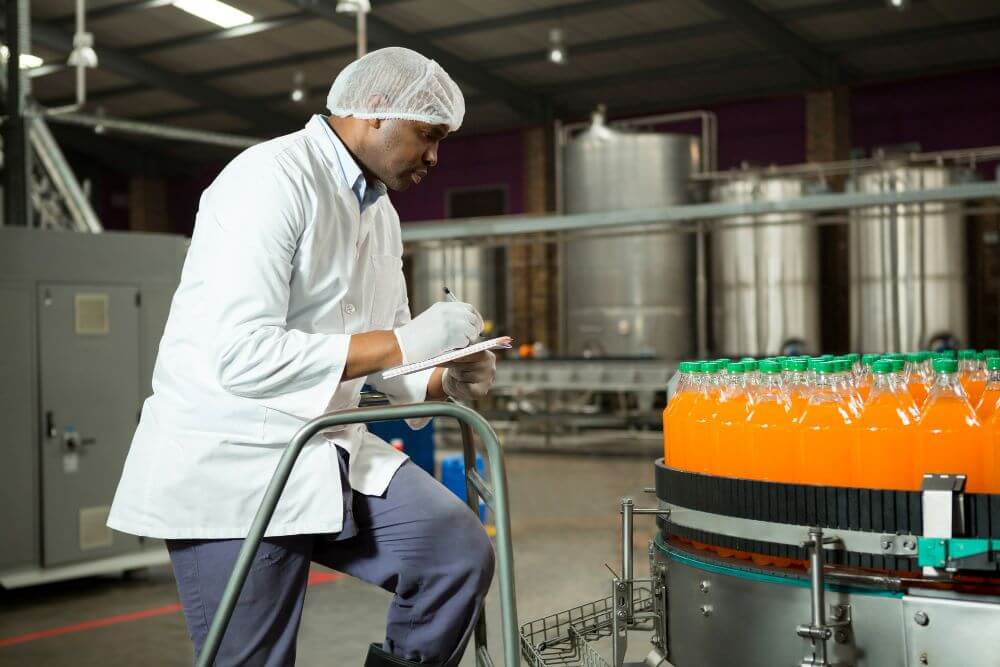An efficient packaging line depends on more than filling speed. It starts with getting bottles onto the line, correctly positioned and ready for the next step. That’s where a bottle unscrambler comes in.
So, what is a bottle unscrambler? It’s a machine that takes bulk, loose bottles and feeds them upright onto a conveyor, spaced and oriented the right way. This makes it easier for filling, capping, labeling, and packing machines to do their jobs without interruptions.
If you’re still loading bottles by hand or struggling with alignment issues, a bottle unscrambling machine can remove that bottleneck. Let’s look at how these machines work and why they matter.
What Does a Bottle Unscrambler Do?
A bottle unscrambler machine automates the process of sorting and orienting bottles. Operators dump empty bottles into a hopper or bin. From there, the machine moves them into a rotating disk, elevator, or other system that separates and aligns them upright. It then places them onto the main conveyor one by one, evenly spaced.
This eliminates the need for manual sorting, which can be slow, inconsistent, and unsafe.
Most bottle unscrambler machines include sensors and guides to detect if bottles are misaligned or jammed. If something goes wrong, the machine stops automatically.
Why Use a Bottle Unscrambler?
Manual bottle feeding is a weak point in many production lines. It slows down production and introduces risk. An unscrambler machine creates a smoother process. It supports continuous filling and packaging without gaps or jams.
Here’s what you gain by adding a bottle unscramble machine:
- Faster throughput
- Fewer delays or jams
- Lower labor costs
- Safer working conditions
- Consistent bottle orientation
If your operators spend time straightening bottles or restarting machines due to jams, a bottle unscrambler solves that problem.
Applications Across Industries
Bottle unscramblers are used in many industries:
- Food and beverage
- Pharmaceuticals
- Personal care
- Household chemicals
- Nutraceuticals
Any operation that fills rigid containers, plastic or glass, can benefit from a bottle unscrambler machine. Whether you’re handling small 1 oz dropper bottles or 1-liter containers, there’s a model that fits.
Compatibility With Downstream Equipment
A good bottle unscrambler doesn’t just sort bottles. It keeps pace with your entire line. If your filler or capper runs at 60 bottles per minute, your unscrambler should match or exceed that speed.
Bottle unscrambler machines often include variable-speed motors and sensors to coordinate with downstream equipment. This keeps bottles moving smoothly and reduces the risk of backup.
If you’re automating your line, a bottle unscrambling machine is often one of the first upgrades.
What to Consider Before Buying
Not all bottle unscramblers are the same. Here’s what to check:
- Bottle size range – Can it handle the widths, heights, and shapes you use?
- Material compatibility – Most work best with plastic; glass may need special handling.
- Speed – Choose a model that matches your filler or capper.
- Footprint – Make sure it fits your space.
- Tooling changeover – If you run multiple bottle types, make sure changeovers are fast and simple.
Look for models that support quick cleaning and don’t require complex adjustments. This minimizes downtime and makes daily operation easier.
Bottle Quality Affects Performance
A bottle unscrambler machine works best with consistent, high-quality bottles. Dented or warped containers may jam or misfeed.
If you’re sourcing bottles from multiple suppliers, be sure to test them in the system before full production.
Well-made unscrambler machines include jam detection and self-correction features. But feeding damaged containers too often will still cause issues.
Maintenance and Longevity
Like most mechanical equipment, bottle unscramblers need regular checks, usually cleaning, lubrication, and occasional belt or guide adjustments.
Well-maintained machines can run for years with minimal downtime. Many systems are built from stainless steel and designed for long-term industrial use.
Choose a vendor that offers support, spare parts, and operator training. This keeps your line running without delays.
When to Add a Bottle Unscrambler
If your line runs more than a few thousand bottles per day, or if you’re adding automated fillers, it’s time to consider an unscrambler. Hand-loading may work at small scale, but it doesn’t support growth.
A bottle unscrambler machine isn’t just about speed, it improves consistency, reduces labor, and helps every other machine on the line perform better.
It also improves safety. Workers won’t need to reach into moving equipment or handle bulk containers in awkward positions.
Conclusion
A bottle unscrambler is a simple but essential tool for efficient production. It eliminates manual sorting, reduces downtime, and keeps your line running at full speed.
If your bottles enter the line in bulk, a bottle unscrambling machine gets them into position, upright, spaced, and ready for filling.
Adding an unscrambler machine is often one of the most cost-effective upgrades you can make. It helps you scale output without increasing labor costs or line complexity.
For operations focused on reliability and throughput, a bottle unscrambler machine is a smart, low-risk step toward full automation.






